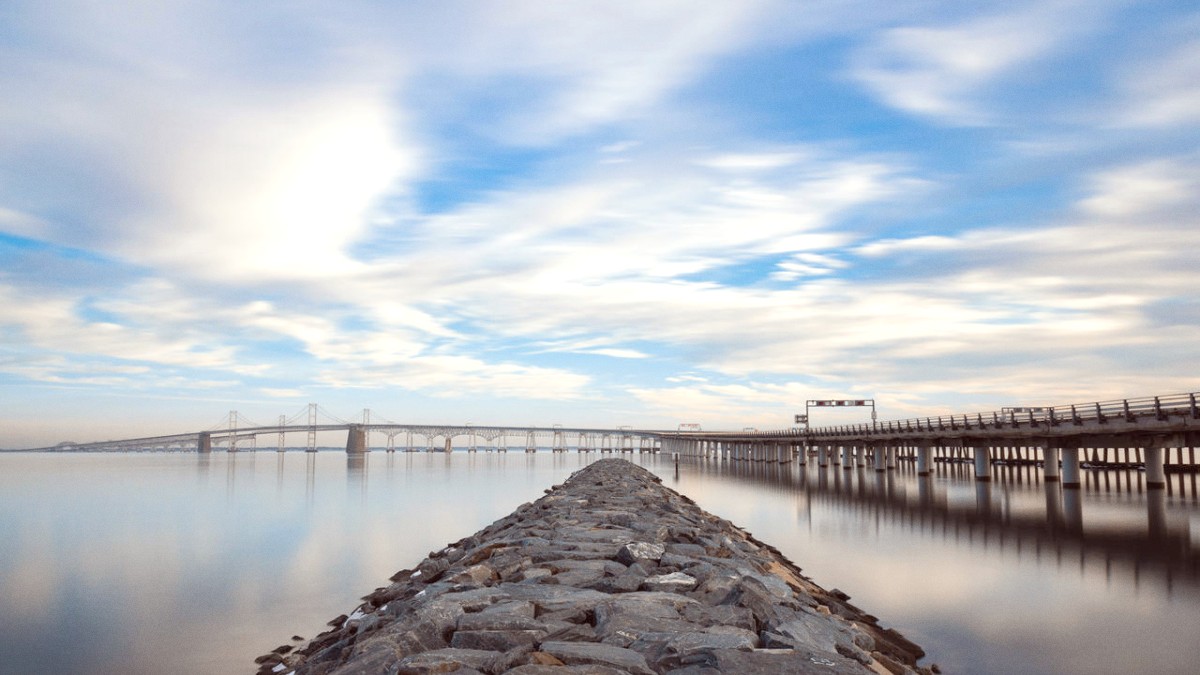
Maryland, USA
The U.S. Naval Academy in Annapolis, founded in 1845, serves as the undergraduate college of the U.S. Navy. Its beautiful campus features historic buildings, monuments, and a museum dedicated to naval history. Visitors can explore the grounds, Chapel, and museum.
The Maryland State House, dating to 1772, is the oldest state capitol in continuous legislative use in the U.S. It was the site where George Washington resigned his commission in 1783. Free admission and tours are available daily.
Check individual museum websites for current special exhibitions, lectures, and events.
Maryland State Parks (e.g., Calvert Cliffs, Elk Neck), William Paca House and Garden (Annapolis).
Chesapeake Bay Bridge, North Point State Park, Calvert Cliffs.
Blackwater National Wildlife Refuge (birdwatching), Assateague Island (wild horses).
Calvert Cliffs (Miocene-era fossil cliffs).
Bayshore beaches (Sandy Point State Park), network of rivers and coves for water activities.
Beyond the popular attractions, the Chesapeake Bay region conceals quieter, rewarding hidden gems that present a distinct perspective.
A picturesque screwpile lighthouse, beautifully preserved, revealing insights into Bay navigation history.
A charming, historic town on the Eastern Shore, quieter than St. Michaels, with a relaxed atmosphere and the unique Oxford-Bellevue Ferry.
A laid-back waterman's town on the Eastern Shore, known for marinas and seafood, demonstrating a genuine working-waterfront feel.
Seek out local crab shacks or seafood markets away from main tourist areas for authentic experiences and fresh seafood.
Explore quiet community beaches and parks popular with residents, for peaceful Bay access without crowds.
Salisbury, MD, presents a developing Eastern Shore city with a revitalized downtown and emerging craft breweries. Crisfield offers an authentic waterman's town experience.
Capture the stunning sunrise or sunset over this iconic bridge.
Photograph the famous wild horses roaming freely on the beaches of Assateague Island.
The numerous lighthouses dotting the Bay present picturesque subjects, each with distinct character. Image 8.5.1: Concord_Point_Lighthouse.jpg
The region's rich past presents further exploration opportunities.
To maximize your sightseeing, consider combining nearby attractions. For instance, a day in Annapolis could include the Naval Academy, State House, and a walk through Historic Downtown.
In Baltimore, the Inner Harbor attractions are easily walkable, or you can use a water taxi for transport. On the Eastern Shore, plan drives between charming towns and natural refuges.
Optimize your visits for prime viewing and photographic opportunities.
Seek out quieter moments and unique perspectives.
Step back in time through the region's preserved historical areas.
Explore sites that chronicle the region's industrial and military past.
Consider geographical clustering of attractions when planning your sightseeing to minimize travel time and maximize your experience.
Group visits to the U.S. Naval Academy, Maryland State House, and historic downtown streets. All are within walking distance or a short stroll.
Easily combine the National Aquarium, Maryland Science Center, and historic ships. Water taxis offer easy movement between these sites.
Plan scenic drives to visit charming towns like St. Michaels, Easton, and Oxford, combining them with natural refuges like Blackwater NWR.
For popular attractions like the National Aquarium, purchasing timed entry tickets in advance is a good idea, especially on weekends and peak seasons.
Book attractions via GetYourGuideConsider guided tours at sites like the U.S. Naval Academy or Fort McHenry for historical context and insights.
Find guided tours on GetYourGuideIf planning multiple museum visits, consider purchasing a reciprocal museum membership that might offer free or discounted entry to other participating institutions.
Always verify the operating hours of attractions, as these can vary seasonally or on holidays.
Look for special events, festivals, or temporary exhibitions that might align with your travel dates for unique experiences.
Many attractions offer educational programs, workshops, or interactive exhibits suitable for families and curious learners.
Many popular attractions in the Chesapeake Bay region strive for accessibility.
Engage with locals at smaller shops or eateries for their favorite hidden gems.
They might reveal lesser-known spots or local traditions not found in guidebooks.
The Chesapeake Bay region is a treasure trove of scenic beauty and historical charm, offering numerous opportunities for memorable photography.
The region presents iconic views that capture its essence.
Explore the natural landscapes that define the Bay area.
The Bay's ecosystems teem with diverse wildlife, creating excellent opportunities for nature photography.
Bring a telephoto lens for capturing distant wildlife without disturbing them.
Capture the historical essence of the Chesapeake Bay through its preserved sites and architecture.
Consider exploring side streets and alleyways for unique architectural details and quieter photographic moments.
Photographic opportunities abound during the region's many cultural and maritime events.
Check local tourism calendars for event dates to plan your visit.
Ideal for capturing expansive Bay vistas, city skylines, and architectural exteriors.
Beneficial for wildlife photography, capturing details of distant boats, or architectural elements.
Essential for low-light conditions, long exposures (e.g., city lights at night), or capturing star trails.